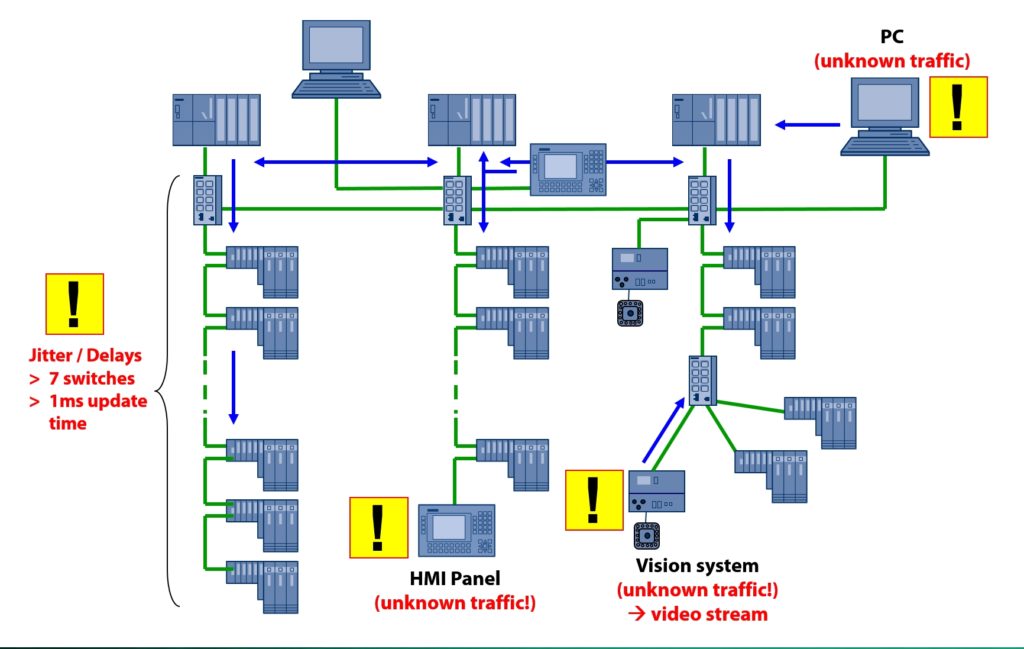Worried about Bandwidth? Some students at our Long Beach PROFINET one-day training class were. It’s definitely something to think about. Here’s a start:
There’s never a substitute for doing the engineering. PROFINET messages tend to be small. But design your topology to minimize the chance of using too much bandwidth.
You can use line topology, but remember that each device includes a switch which will introduce a small amount of latency. If you place a bandwidth-intensive device at the end of the line you are asking for bandwidth issues on the line.
PI offers a design guideline that includes a bandwidth calculation tool. Use it!
You designed it right, but stuff happens. Unexpected stuff. Like network floods. Some device starts pumping out Ethernet frames. Maybe an unexpected non-PROFINET device is added to the network. Here’s how to anticipate and prevent the problem. Ethernet switches (even those in PROFINET devices) offer standard IT features that you can use. Features like Simple Network Management Protocol (SNMP). SNMP can be used to read switch information like disconnected cable or excessive retries. Include some screens in your HMI to track and alarm these things.
And if you positively have to make sure that there’s bandwidth for your I/O messages, PROFINET can help. Some PROFINET controllers and devices support bandwidth reservation. It’s part of PROFINET Isochronous Real Time (IRT). To give you an idea of how that works, check out this video of IRT in a drive application:
There’s never a substitute for doing the engineering. Use the design guideline to set your network topology. Use the diagnostic power of SNMP to alert on network problems.
–Carl Henning

